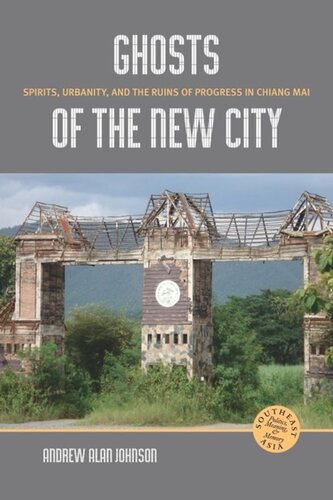

Most ebook files are in PDF format, so you can easily read them using various software such as Foxit Reader or directly on the Google Chrome browser.
Some ebook files are released by publishers in other formats such as .awz, .mobi, .epub, .fb2, etc. You may need to install specific software to read these formats on mobile/PC, such as Calibre.
Please read the tutorial at this link: https://ebookbell.com/faq
We offer FREE conversion to the popular formats you request; however, this may take some time. Therefore, right after payment, please email us, and we will try to provide the service as quickly as possible.
For some exceptional file formats or broken links (if any), please refrain from opening any disputes. Instead, email us first, and we will try to assist within a maximum of 6 hours.
EbookBell Team

5.0
50 reviewsChiang Mai (literally, “new city”) suffered badly in the 1997 Asian financial crisis as the Northern Thai real estate bubble collapsed along with the Thai baht, crushing dreams of a renaissance of Northern prosperity. Years later, the ruins of the excesses of the 1990s still stain the skyline. In Ghosts of the New City, Andrew Alan Johnson shows how the trauma of the crash, brought back vividly by the political crisis of 2006, haunts efforts to remake the city. For many Chiang Mai residents, new developments harbor the seeds of the crash, which manifest themselves in anxious stories of ghosts and criminals who conceal themselves behind the city’s progressive veneer.
Hopes for rebirth and fears of decline have their roots in Thai conceptions of progress, which draw from Buddhist and animist ideas of power and sacrality. Cities, Johnson argues, were centers where the charismatic power of kings and animist spirits were grounded; these entities assured progress by imbuing the space with sacred power that would avert disaster. Johnson traces such magico-religious conceptions of potency and space from historical records through present-day popular religious practice and draws parallels between these and secular attempts at urban revitalization.
Through a detailed ethnography of the contested ways in which academics, urban activists, spirit mediums, and architects seek to revitalize the flagging economy and infrastructure of Chiang Mai, Johnson finds that alongside the hope for progress there exists a discourse about urban ghosts, deadly construction sites, and the lurking anxiety of another possible crash, a discourse that calls into question history’s upward trajectory. In this way, Ghosts of the New City draws new connections between urban history and popular religion that have implications far beyond Southeast Asia.